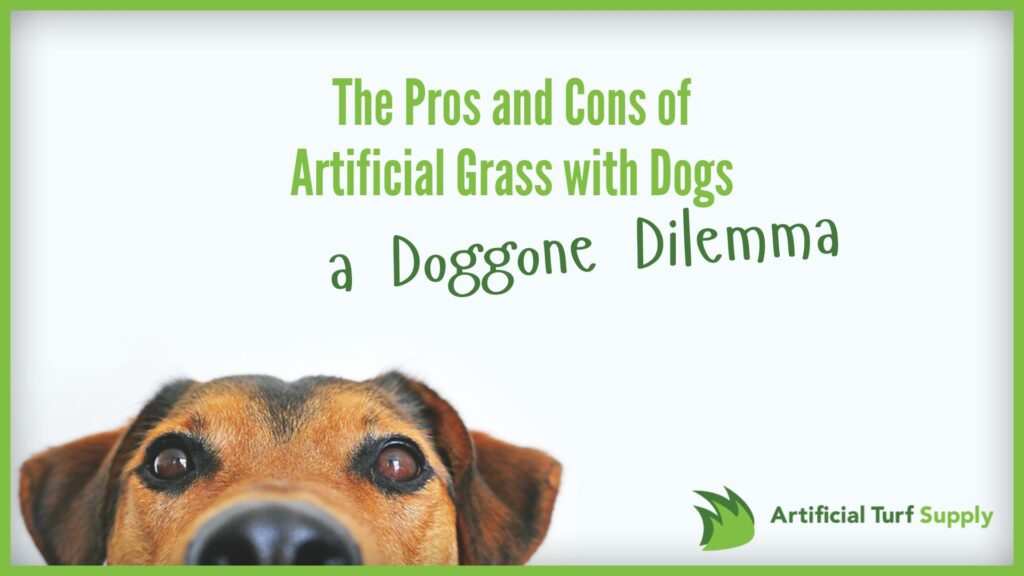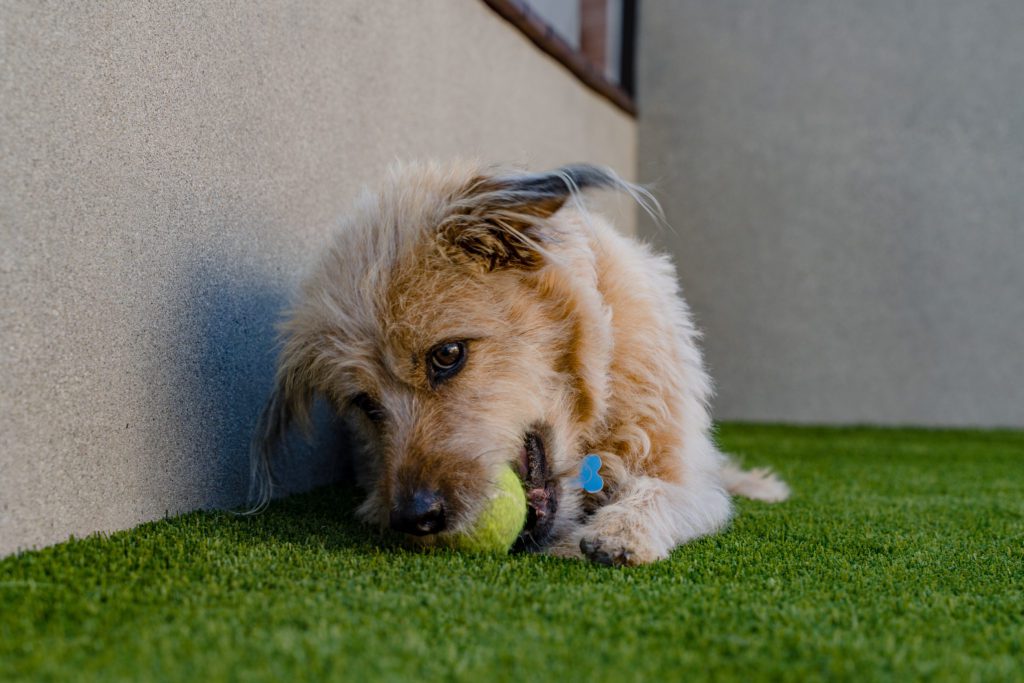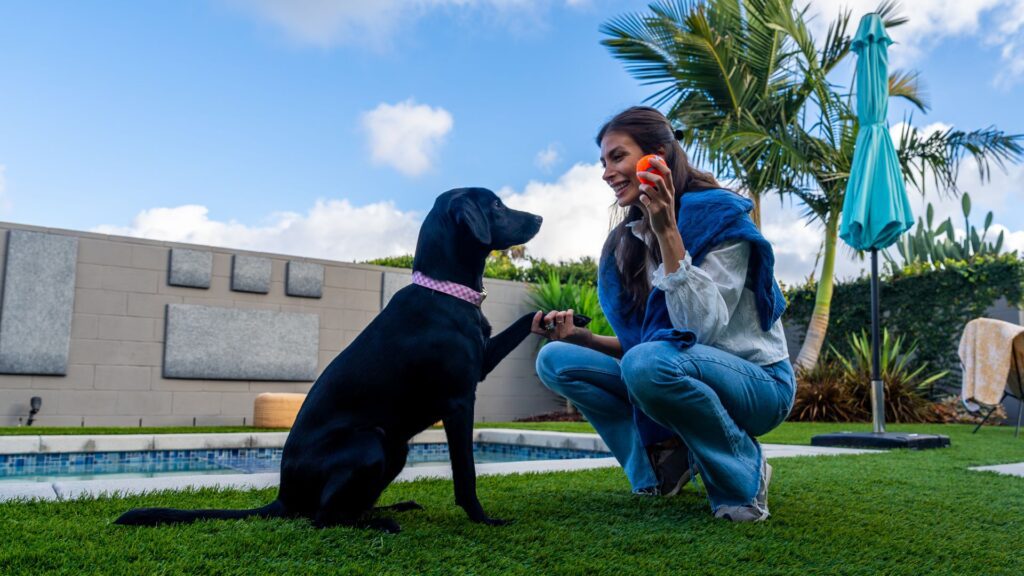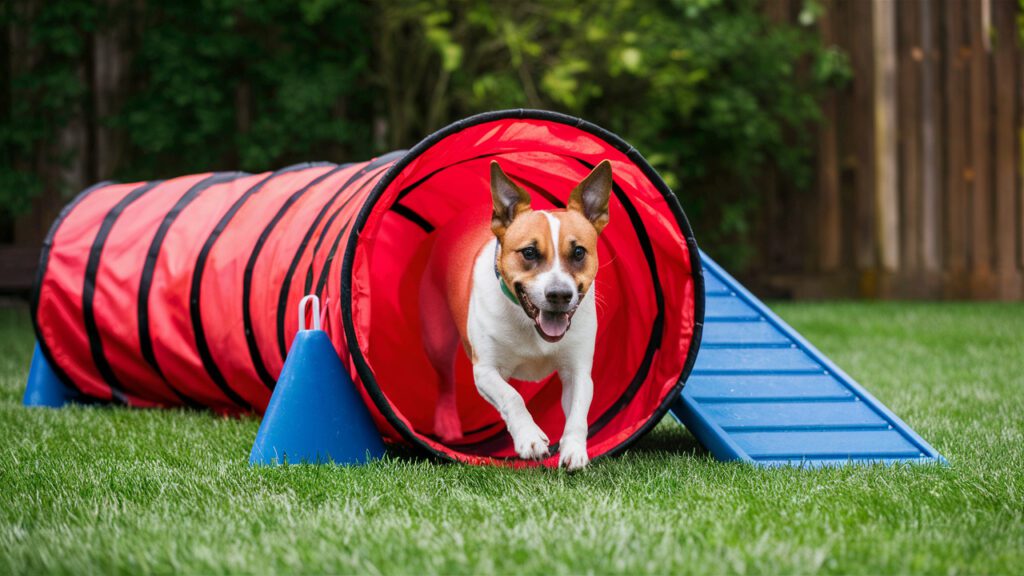Even at their worst, aren’t dogs still the best? My 100+ pound Bernese mix tracks mud around the house worse than a toddler. He’s always in the way, and we’re always cleaning up after him. But that dude loves our family in a way that is 100% pure. So, how do we create the happiest, healthiest yard for the big guy? Well, let’s look at the pros and cons of artificial grass with dogs and figure it out.
From mud, pee spots, and pests to hot paws and odor issues, let’s figure out The Good, The Bad, the Pugly about synthetic turf and our goodest canine boys and girls.
How Artificial Grass Helps You!
I know, I know. You came here to read about the pros and cons of artificial grass with dogs. So I’ll just hit some turf high-points for you and the non-furry folks in your household. And believe me, there are some stellar turf benefits in here.
-
- Artificial grass is a low-maintenance, water-saving alternative to natural lawns
- It offers benefits like easy cleaning, durability, and allergen reduction
- Initial costs are off-set by long-term water and maintenance savings
- The high-quality stuff looks good every day, every season, for years to come
5 Tail-Wagging Pros of Artificial Grass for Dogs
These days, modern artificial grass is an excellent, healthy option for pet-owners and their doggos. And there are so many great ways to use turf for your dog, too! By choosing the right turf, you can lay down a soft, healthy, stain-resistant play area for your pup. So let’s go over these 5 Pros, shall we?
1. No More Muddy Paw Prints
Remember the last time it rained, and your pup decided to reenact their favorite mud wrestling scene? I’m not an angry guy, but those muddy prints get the blood pressure spiking up into some unhealthy levels. But hey, artificial grass lets you say ‘adios’ to all that mess! Even in the heaviest rain, no dirt means no mud. Your dog can run and play to their heart’s content without turning your home into a mud trail.
2. Bid Farewell to Brown Spots
Every dog owner knows what I’m talking about here. A lawn that looks like a connect-the-dots puzzle of yellow-brown spots? I love my dog. I don’t love those spots. But artificial grass just might save the day. Dog urine contains nitrogen, which can “burn” natural grass. That’s what leaves those patches. Synthetic turf doesn’t react that way, so your yard shrugs off those puppy puddles. All lush-looking green grass, all year-round.
3. Pest-Free Paradise
So your dog loves your thick, green grass, right? You know what else does? Fleas, ticks, and all kinds of creepy crawlies. But artificial turf sends these unwanted guests packing. Fewer pests hitching a ride on your pooch means less of them in your house, less trips to the vet, and less of them possibly getting in contact with you and your two-footed housemates. This is definitely a “everone wins” situiation (well, unless you’re a tick, I guess).
4. Allergy Relief for Sensitive Pups
Here’s a fun science fact: some dogs are allergic to grass, pollen, and other outdoor allergens. If your furry friend is constantly scratching or sneezing after romping in the yard, artificial grass could be a game-changer. It’s hypoallergenic. That means your pup can play without those pesky allergic reactions.
5. Easy Peasy Cleanup
There are 5 humans in my house. There are 0 humans in my house that like cleaning up dog poop. And artificial grass actually makes this chore easier. Solid waste is easier to pick up from well-installed synthetic turf, and liquid waste drains right through it. Grab the hose, spray the spot, and get back to what you really want to do … like playing fetch with ole Fido!
The Bow-Wow Cons of Artificial Grass for Dogs
Okay, now we need to talk through some of the potential issues dog-owners can run into with artificial turf. Yes, they do exist. But for the most part, there’s ways to avoid or mitigate them.
1. The Heat is On
On hot summer days, some artificial grasses can get pretty toasty. Natural grass releases moisture and helps cool the area and puppy paws. Synthetic turf doesn’t naturally do that, and can retain heat. This might make it uncomfortable for your dog’s sensitive paw pads. The first solution to this is purchasing artificial turf type and options (like some infill options) that mitigate this heat. Another great way to keep your dog comfortably cool on turf is to provide shaded areas for play and rest. I mean, on hot days, our sweat-gland-deficient friends should have some shade anyway, right?
2. Initial Cost Might Make You Howl
Un-fun Fact: installing quality artificial grass ain’t cheap. That initial investment can be painful, but it’s worth noting that it can save you money in the long run on water bills and lawn maintenance. You’re going to have to weigh the long-term benefits against that upfront expense.
3. Potential Odor Issues
Well-installed and maintained artificial grass is designed to drain well. But if it’s not installed or maintained? Well, it can lead to odor buildup. So, make sure you talk to a professional about proper turf drainage, installation, and care. Plus, if you’re not diligent about cleaning up after your pet and regularly rinsing the turf, you might find yourself with a stinky situation on your hands (or paws).
4. Environmental Considerations
This shouldn’t surprise you. But if you’re an eco-conscious pet owner, it’s worth noting that artificial grass is not as natural as natural turf. (Obvious statement is obvious, am I right?) It’s made from synthetic materials and doesn’t provide the same benefits to local ecosystems as real grass. However, it does conserve water, and the materials are being made and more eco-friendly every year. The team at Artificial Turf Supply would love to explore the best planet-friendly options for your pet-lawn whenever you’re ready: X
5. Replacement Costs
High-quality artificial grass is durable … not indestructible. It won’t last forever. Depending on usage and quality, you may need to replace it every 8-15 years. Factor this in when making your decision.
Choosing the Right Artificial Grass for Your Furry Friend
So, have you and Max decided to take the artificial grass plunge? Well, before you commit, check out our recommendations for the best option for your dog:
-
- Durability: Look for turf with a high face weight (70-90 ounces) to withstand your dog’s playful antics.
- Drainage: Get a turf with excellent drainage so that liquid waste passes through easily.
- Pile Height: A shorter pile (around 1 inch) is often easier to clean and maintains its shape better.
- Material: Choose polyethylene or a blend that includes it for softness and durability.
- Infill: Consider pet-friendly, antimicrobial infill options to help control odors and bacteria. We highly suggest Envirofill.
So, Is Artificial Grass Pawfect for Your Pup?
Anges Sligh Turnbull said, “Dogs’ lives are too short. Their only fault, really.” I don’t know her books, but I know she’s right on this point. And Groucho Marx said, “Outside of a dog, a book is man’s best friend. Inside of a dog, it’s too dark to read.” That’s less relevant, but it made me laugh.
We want our dogs to live the healthiest, happiest, longest lives possible. And high-quality artificial grass lawns can be a great way to do that. So, consider your pets’ habits, your climate, and your lifestyle … then take a look at these pros and cons of artificial grass with dogs. At that point, you’re ready to make the call. I’m confident our team can help you find a turf that will make your lives easier and full of healthy puppy playtime!
As always, the Artificial Turf Supply team is just a phone call way if you have any questions or concerns (866) 677-9405). We love dogs, we love lush lawns, and we’d love to help you lay the best turf for family’s best pooches.






